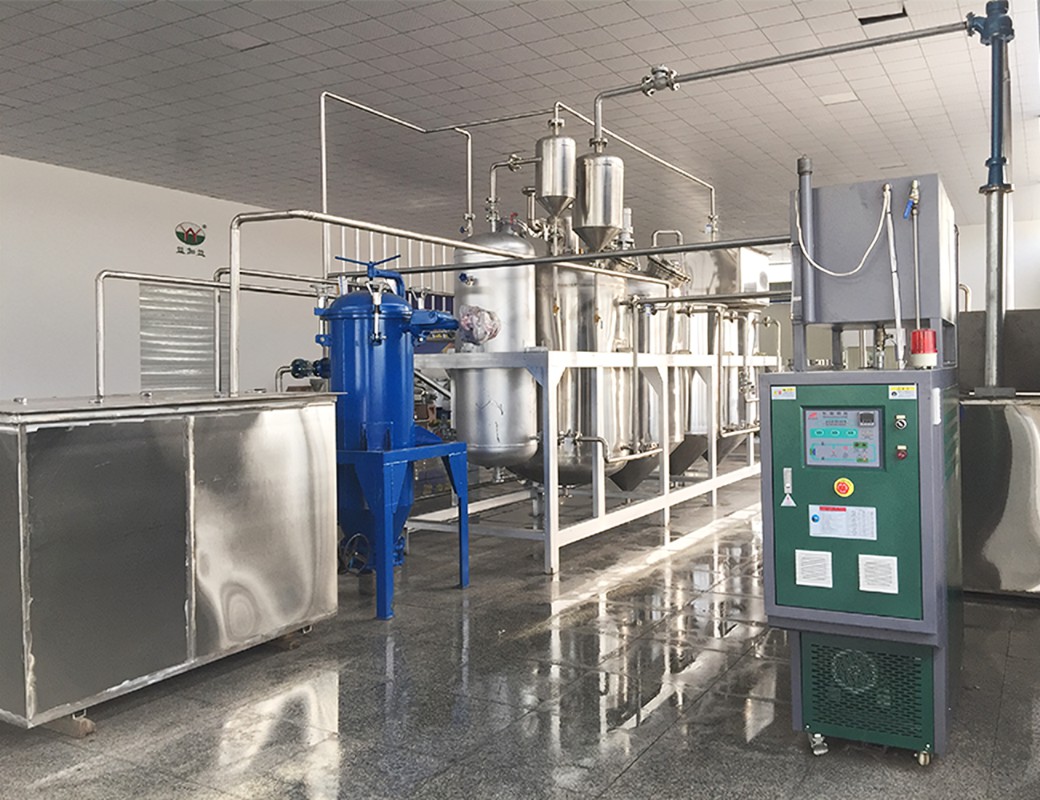There are two refining methods for oil refining equipment, namely physical refining and chemical refining. What is the difference between these two refining methods, and how to choose?
The physical refining method uses the principle of direct steam distillation to remove free fatty acids and low-molecular odor substances that are much lower in relative volatility than triglycerides in the oil along with steam. It can also be called "stripping and deacidification". Or "distillation deacidification" method.
The chemical refining method is also known as alkali refining and deacidification, which is the most used method in the refining and deacidification process. Usually, lye is added to the degummed oil to make the lye react with free fatty acids and precipitate in the form of soapstock.

The technological process of the physical refining method is:
Crude oil-degumming-decolorization-deacidification and deodorization-refined edible oil.
① Degumming: Add phosphoric acid solution to edible oil to obtain colloidal precipitate, and then filter the precipitate.
② Decolorization: Add white clay to the edible oil to absorb the pigment and some other impurities in the oil.
③ Deacidification and deodorization: high-temperature water vapor is passed into the edible oil, free fatty acids are removed by distillation, and the difference in volatility between oil and odor substances is used to remove odor substances in the oil.
The process flow of chemical refining method is:
Crude oil-degumming-deacidification-decolorization-deodorization-refined edible oil
① Degumming: Heat water into edible oil to agglomerate peptic impurities into agglomerates, which are separated after sedimentation.
② Deacidification: I want to add lye to the edible oil to neutralize free fatty acids, thereby removing free fatty acids.
③ Decolorization: Add white clay to the edible oil to absorb the pigment and some other impurities in the oil.
④ Deodorization: pass high-temperature water vapor into the edible oil, and use the difference in volatility between oil and odor substances to remove odor substances in the oil.
From the above process, it can be seen that the main difference between physical refining and chemical refining is the way to remove free fatty acids. Physical refining is mainly suitable for processing certain fats with high FFA content (such as palm oil, coconut oil, etc.). When the free fatty acids in the fat are below 2%, the advantages of physical refining are not obvious. Deeply oxidized fats and fats with high non-hydratable colloid content are not suitable for physical refining. And chemical refining can be used for almost all edible oils. Therefore, which process to choose during refining still needs to be considered comprehensively according to various factors such as the quality of raw oil and refined oil, operating costs, and environmental protection costs.
Copyright © Henan Zhongxing Grain And Oil Machinery Co.,Ltd. All Rights Reserved. Powered by MetInfo